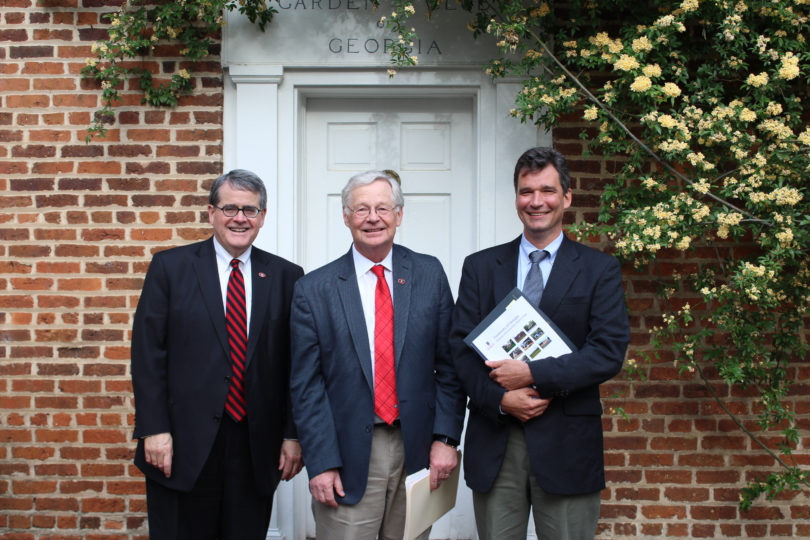The Office of University Architects at the University of Georgia unveiled a historic preservation plan to document and maintain UGA buildings 50 years and older on all campuses and across the state. After two years of research, the plan will be implemented at all of the university’s sites in Georgia.
President Jere W. Morehead established the study to create the plan, which was implemented by College of Environment and Design Dean Dan Nadenicek and a steering committee.
“One of the major strengths of the plan is that it provides a defensible and replicable process and a clearly articulated set of standard operating procedures,” said Nadenicek. “As steering committee chair, it was my pleasure to work with such a talented group of individuals who were all dedicated to providing the best possible historic preservation master plan for the University of Georgia.”
The president was in attendance at the April 11 reception to personally thank Nadenicek, the steering committee, faculty, staff and students who put in countless hours to create the plan.
The Board of Regents of the University System of Georgia is the largest holder of historic resources among state entities, and UGA is the largest holder among USG units with more than 730 historic buildings and 55 cultural landscapes across 11 Georgia counties.
“We want to ensure the Athens campus is taking steps toward preservation of historic buildings, but this goes well beyond the Athens campus,” said Scott Messer, director of historic preservation in the Office of University Architects. “All campuses are a part of this, not just Athens.”
The process started with a historic resource inventory, which came to life with the help of faculty and students in the College of Environment and Design and consultant teams. The inventory includes a history, context, significance, condition and integrity of each historic building.
Now that the inventory is in place, the university can follow the detailed process on all historic buildings for things like maintenance and upkeep.
In addition to the benefits to the university’s legacy, the process provided experiential learning opportunities for graduate students in the College of Environmental Design. Nine graduate assistantships were created, and a number of internships were established in the historic preservation department to create the inventory and process.
At the reception, Nadenicek presented the college’s Dean’s Award to Messer for his work on the plan.





